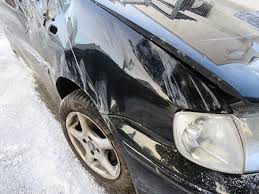
Car accidents are unfortunate events that can happen kfz gutachter düsseldorf to anyone at any time. After a collision, one of the most critical steps is assessing the damage to your vehicle. Car damage assessment is a complex process that involves examining the exterior and interior of the vehicle to determine the extent of the damage. In this article, we will explore the various aspects of car damage assessment, including the different types of damage, how to assess them, and what to do after assessing the damage.
Types of Car Damage Car damage can be classified into several categories, each requiring a different approach to assessment and repair. The most common types of car damage include:
- Exterior Damage: This includes dents, scratches, and other visible damage to the exterior of the vehicle. Exterior damage is often the easiest to assess, as it is readily visible.
- Structural Damage: Structural damage involves damage to the frame or chassis of the vehicle. This type of damage is more severe and can affect the structural integrity of the vehicle.
- Mechanical Damage: Mechanical damage refers to damage to the engine, transmission, or other mechanical components of the vehicle. This type of damage can be challenging to assess without the help of a mechanic.
- Interior Damage: Interior damage includes damage to the interior of the vehicle, such as to the seats, dashboard, or other components. Interior damage is often less severe but can still affect the overall value of the vehicle.
Assessing Car Damage When assessing car damage, it is essential to be thorough and systematic. Start by examining the exterior of the vehicle, looking for dents, scratches, and other visible damage. Use a flashlight to inspect the interior of the vehicle, paying close attention to the seats, dashboard, and other components.
Next, assess the structural integrity of the vehicle by checking for any signs of structural damage, such as misaligned panels or cracks in the frame. Finally, inspect the mechanical components of the vehicle, listening for any unusual noises or vibrations that may indicate damage.
What to Do After Assessing the Damage After assessing the damage to your vehicle, it is essential to take the necessary steps to repair it. If the damage is minor, such as a small dent or scratch, you may be able to repair it yourself using a dent repair kit or touch-up paint.
For more severe damage, such as structural or mechanical damage, it is best to take your vehicle to a professional mechanic or body shop for repair. They will have the expertise and tools necessary to repair the damage properly and restore your vehicle to its pre-accident condition.
Conclusion Car damage assessment is a critical step in the aftermath of a car accident. By understanding the different types of damage and how to assess them, you can ensure that your vehicle is repaired properly and restored to its pre-accident condition. Remember to always be thorough and systematic when assessing car damage and seek professional help for more severe damage.
